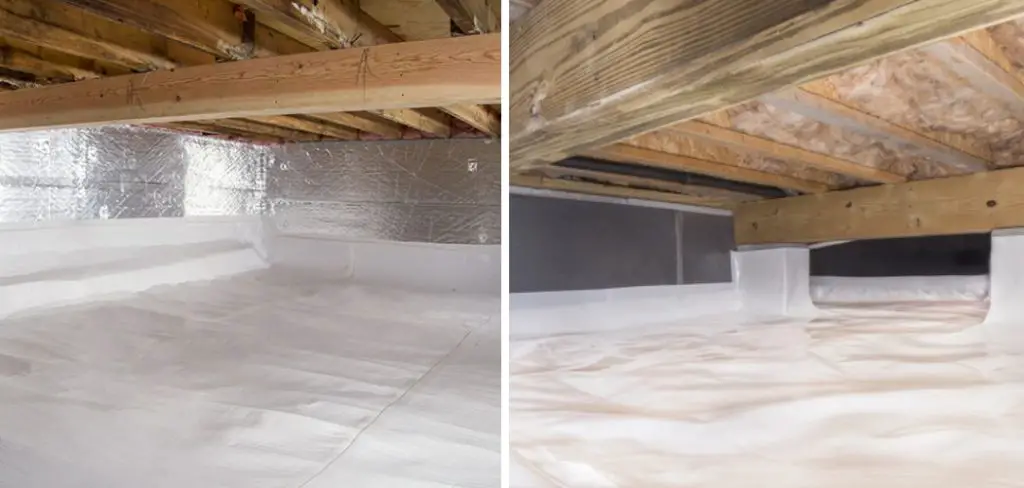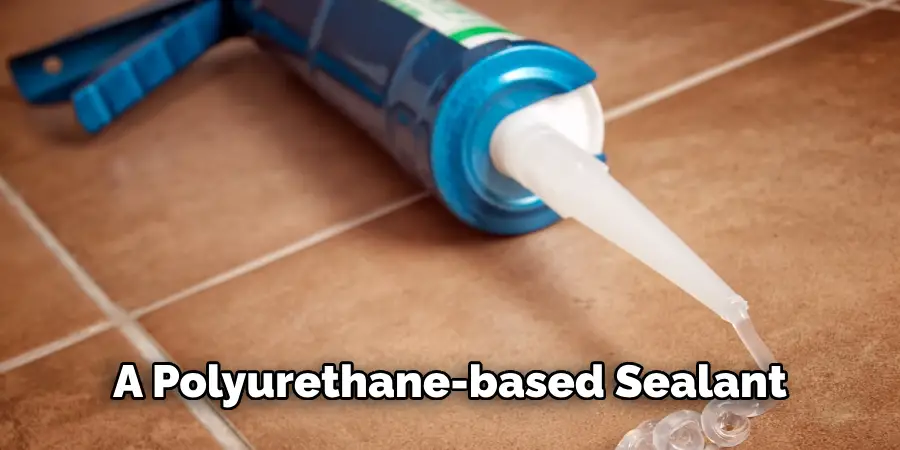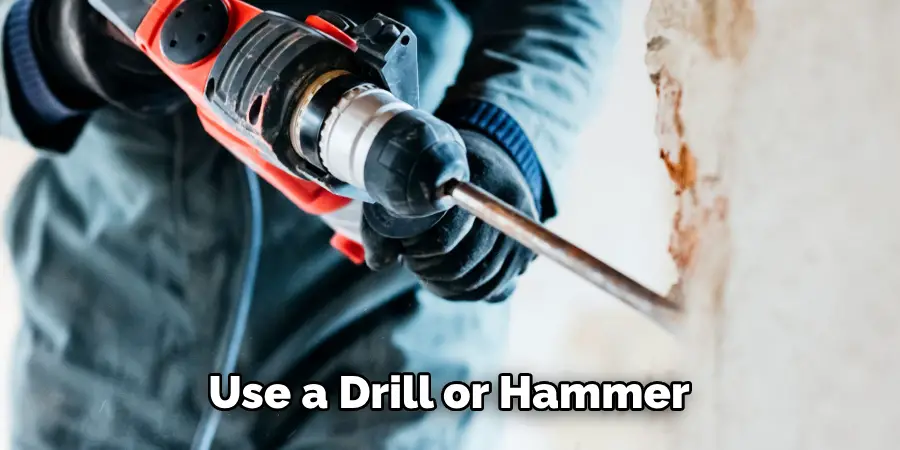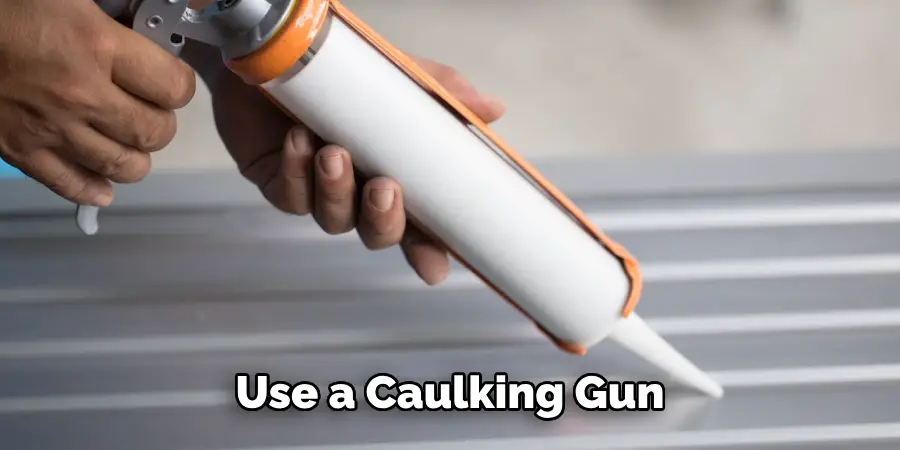If you’re looking for an effective way to reduce moisture levels and preserve the integrity of a concrete block structure, attaching a vapor barrier is the perfect solution.

Vapor barriers are crucial components of any masonry construction project, as they help to protect against harmful elements like water vapor, which can cause serious damage if allowed to penetrate the wall systems.
In this blog post, we’ll provide step-by-step instructions on how to attach vapor barrier to concrete block in order to ensure optimal protection and durability of your structure. Read on for more guidance that will give you peace of mind when it comes time for your next building project!
Do Concrete Block Walls Need a Vapor Barrier?
Concrete block walls usually do not require a vapor barrier, as they are designed to pass moisture. However, there may be times when a vapor barrier is necessary for certain applications – such as if you are finishing the interior of your basement with drywall and insulation.
In this case, it is important to attach a vapor barrier in order to prevent any moisture from coming through the walls. In addition to this, a vapor barrier can help reduce noise and keep out allergens like pollen and dust mites. To ensure that your vapor barrier is properly attached to your concrete block wall, it’s important to follow a few simple steps.
The first step is to clean the surface of the wall. Use a brush and dustpan to sweep away any dirt, dust, or debris that might be on the surface. If there are cracks in the concrete block wall, use a chisel and hammer to widen them before attaching the vapor barrier.
Next, measure the area of the wall that needs to be covered by your vapor barrier, and cut the material to size. Use a sharp utility knife to make sure you get a straight edge on your vapor barrier sheet.

Finally, use adhesive tape or spray-on adhesive to attach the vapor barrier sheet to the wall. Make sure that it is securely attached and free of any air bubbles. You may need two people to ensure that the vapor barrier is properly aligned and attached. Once you’ve made sure everything is secure, your vapor barrier will be ready for use.
What Kind of Adhesive to Use for Vapor Barrier?
When attaching a vapor barrier to a concrete block, the best type of adhesive to use is a polyurethane-based sealant. Polyurethane has excellent adhesion properties and creates a strong bond between the vapor barrier and the concrete block. When applying the adhesive, make sure to follow all instructions on the product label for best results.
Additionally, if there are any gaps or cracks in the concrete block, they should be filled with a polyurethane-based sealant as well. This will help to ensure that the vapor barrier is properly sealed against the concrete block and provides maximum protection. It’s important to allow ample time for the adhesive to dry before moving on to the next step in order for it to achieve a strong bond.
Overall, when attaching a vapor barrier to a concrete block, using a polyurethane-based sealant is the way to go. Following all product instructions and allowing ample time for drying will help ensure that you get the best results. If there are any gaps or cracks in the concrete block, they should also be filled with a polyurethane-based sealant. Doing this will help ensure that your vapor barrier is properly sealed and provides maximum protection.

8 Methods How to Attach Vapor Barrier to Concrete Block
1. Adhesive Tape
One of the easiest ways to attach a vapor barrier to a concrete block is with adhesive tape. There are a variety of tapes on the market that are specifically designed for attaching vapor barriers to concrete, so be sure to choose one that is appropriate for your project.
Before attaching the tape, make sure to clean off any dust or debris on the surface of the block. Then, apply pressure to the tape as you cover the entire surface of the block. Finally, wait for the adhesive to dry fully before proceeding with your project.
2. Cement
Another option for attaching a vapor barrier to a concrete block is with cement. Simply apply a layer of cement to the surface of the block and then press the vapor barrier into place. Be sure to allow the cement to dry completely before proceeding with your project. If you are using a cement board, you can attach it directly to the concrete block with screws or nails.
Be sure to use galvanized or stainless steel screws or nails to ensure a secure bond. Once the board is in place, you can apply the vapor barrier over it and press it down firmly. Again, be sure to allow the cement to dry before continuing with the project.
3. Clips
There are also a variety of clips that can be used to attach a vapor barrier to a concrete block. These clips typically have sharp teeth that grip onto the surface of the vapor barrier, holding it in place. Be sure to choose a clip that is appropriate for the thickness of your vapor barrier.
You may also need to purchase special screws or nails for the clips. Finally, you should use a drill or hammer to make sure that the clip is securely attached to the surface before you start attaching the vapor barrier.

4. Foam Tape
Foam tape is another option for attaching a vapor barrier to a concrete block. This type of tape has an adhesive backing that helps to hold the vapor barrier in place. Foam tape is typically easy to work with and can be cut to fit any size opening. Because the tape is flexible, it can be used in areas where the concrete block is curved.
The foam tape should be applied to the entire surface of the concrete block for a secure seal. As with any adhesive, be sure to follow the manufacturer’s instructions for application and use. However, it is important to keep in mind that foam tape should never be used on concrete that has not been sealed with a waterproof sealant.
5. Grommets
Grommets can also be used to attach a vapor barrier to a concrete block. These metal or plastic rings help to create a secure seal around the edges of the vapor barrier, preventing air and moisture from passing through. Grommets are typically easy to install and can be found at most hardware stores. Start by drilling a hole through the concrete block and vapor barrier, then insert the grommet into the hole.
Once it’s in place, use a hammer or pliers to secure it. Be careful not to damage the vapor barrier when attaching the grommet. After securing the grommet, use a caulking gun to seal the edges. This will ensure that no air or moisture can penetrate through the grommet.

6. Nails
Nails can also be used to attach a vapor barrier to concrete block, although they are not as common as other methods. To use nails, simply drive them through the vapor barrier and into the surface of the block.
Be sure to choose nails that are long enough to penetrate both the vapor barrier and the block itself. A hammer can be used to provide additional force if necessary. It is important to make sure that all nails are firmly secured, or else the vapor barrier may not remain attached.
7. Panels
There are also a variety of panels that can be used to attach a vapor barrier to concrete block. These panels typically have an adhesive backing that helps to hold them in place. Panels are typically easy to install and can be cut to fit any size opening. You can also find panels that come with insulation, making them even more effective at blocking vapor.
Be sure to follow the manufacturer’s instructions when installing these panels. Additionally, you should check for any local building codes or regulations that may be in place regarding the use of panels.
8. Sealant
The last option for attaching a vapor barrier to a concrete block is with sealant. This type of adhesive helps to create a strong bond between the vapor barrier and the block. It also helps to reduce air infiltration, which is essential for maintaining proper insulation levels.
You can use either a single-component or two-component sealant for this task. If using a two-component sealant, make sure to mix the components together in the proper ratio. Then, apply the sealant to the concrete block and firmly press the vapor barrier into place.
Conclusion
Attaching vapor barriers to concrete blocks may seem like a daunting task, but with the right materials and enough patience, anyone can achieve a tight seal to protect their environment from moisture. It’s important to ensure that all edges of the barrier are tightly sealed, and that any cracks or openings are properly covered.
Start by gathering the necessary materials and measuring out the space before making cuts and laying down the vapor barrier. Make sure not to leave any openings between pieces since these can lead to water seeping in. Thanks for reading, and we hope this has given you some inspiration on how to attach vapor barrier to concrete block!
